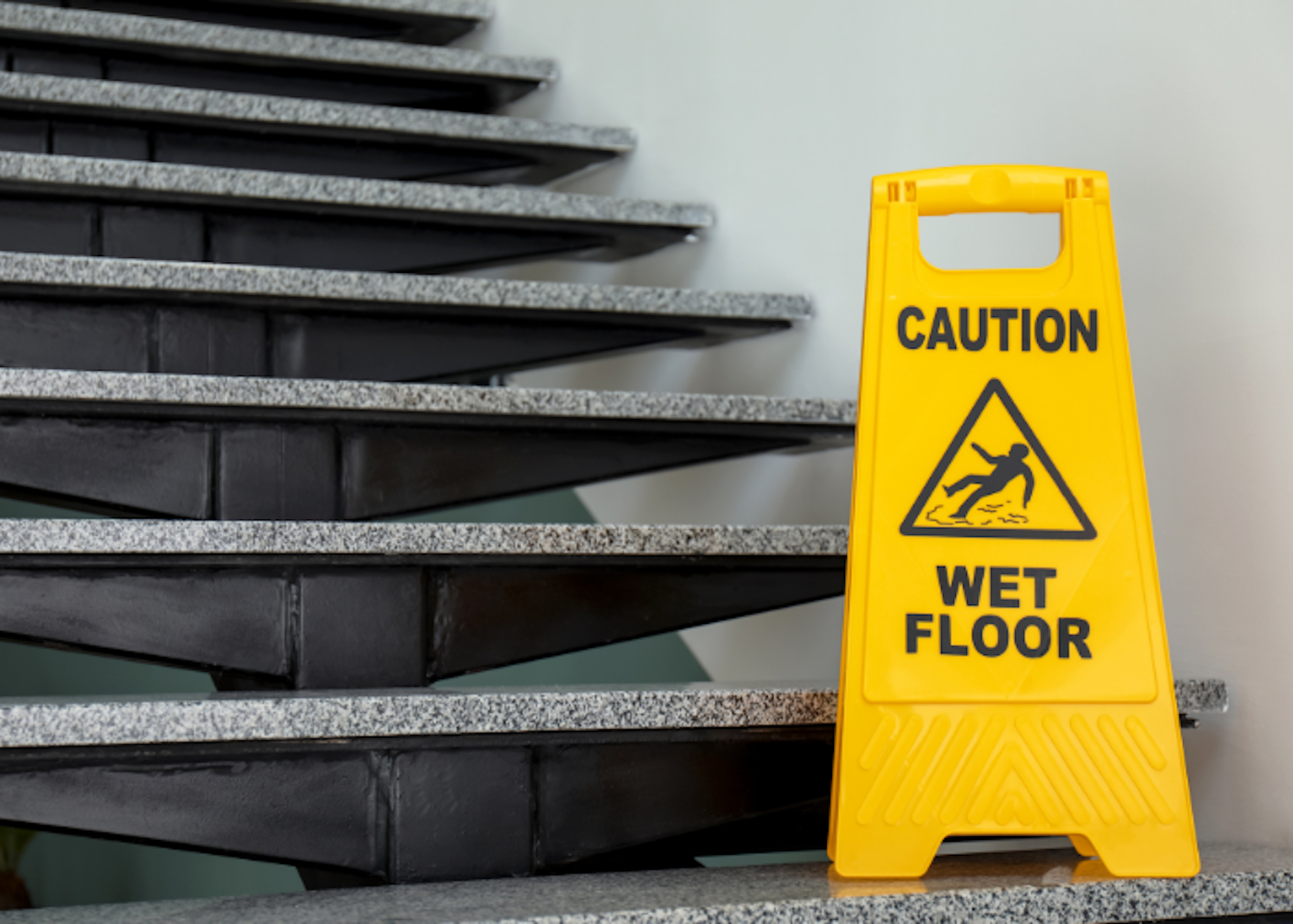
Improving Occupational Safety in Contract Cleaning: Strategies
- 6 min read
- Castle
In the contract cleaning industry, ensuring the safety of cleaning professionals is a top priority. The nature of the work often involves exposure to various hazards, from slippery floors to chemical agents. To safeguard the well-being of employees and maintain a productive and efficient workforce, it’s essential to implement effective safety strategies. In this article, we’ll explore some key strategies for enhancing occupational safety in contract cleaning.
Occupational Hazards in the Contract Cleaning Industry
In the contract cleaning industry, over 3,000 serious accidents involving cleaners are reported to the Health & Safety Executive (HSE) each year, and this figure is likely to be much higher due to under-reporting. In contrast to domestic cleaning performed by homeowners, contract cleaning entails heightened risks that extend beyond just chemical handling.
In commercial settings, factors such as scale, equipment, and specialised requirements all contribute to a much more dangerous environment. From office buildings and educational institutions to healthcare centres, every commercial facility presents its own distinctive set of safety challenges and cleaning requirements which further increases the risk of accidents and injuries.
Some of the most common hazards commercial cleaning operatives are exposed to and must mitigate include:
- Chemical hazards: Professional cleaning chemicals often contain potent ingredients designed to effectively tackle stubborn dirt and grime. However, these substances can pose significant health risks if not handled and stored properly – such as respiratory illnesses and chemical burns.
- Biological hazards: In environments like healthcare facilities, cleaning personnel encounter biohazardous materials such as bloodborne pathogens and infectious agents. Improper cleaning practices in these environments can spread diseases, endangering both the cleaners and the occupants of the facility.
- Manual handling: Cleaning operatives in commercial settings frequently engage in manual handling tasks, which involve lifting, carrying, or moving heavy objects and equipment. Incorrect techniques or overexertion during these activities can result in musculoskeletal injuries, strains, and sprains.
- Slips, trips, and falls: In commercial settings, tasks such as mopping, and floor maintenance take centre stage. These routine activities, while essential for maintaining cleanliness, also introduce significant risks related to slips, trips, and falls.
As a result of these risks, the development of targeted safety protocols for cleaning commercial environments is essential to ensure the well-being of cleaning professionals and end-users of the space.

Mitigating the Risks: 3 Strategies for Enhancing Occupational Safety in Contract Cleaning Processes
To address these risks and enhance occupational safety, implementing effective strategies is essential. By proactively identifying potential dangers and instituting preventive measures, you can create a safer work environment for your employees. This not only protects your operatives but also contributes to increased productivity and overall operational efficiency.
Strategy 1: Provide Comprehensive Cleaner Training
Cleaner training plays a pivotal role in enhancing occupational safety within contract cleaning processes. Thorough and comprehensive training equips workers with the knowledge and skills required to handle cleaning tasks safely and effectively, while also adhering to important regulations. Cleaner training ensures:
- COSHH Compliance: Cleaner training educates workers about the potential risks associated with various cleaning products and chemicals they might encounter during their tasks. This includes understanding the COSHH regulations, which emphasise the safe handling, storage, and disposal of hazardous substances. Training ensures that cleaners know how to read and interpret product labels, identify risks, and follow appropriate safety measures to prevent exposure and adverse health effects.
- Safe Product Usage: Cleaners are trained on the proper usage of cleaning products, including dilution ratios, application methods, and recommended personal protective equipment (PPE). This knowledge ensures that they can use chemicals safely, minimising the risk of accidents, skin irritation, respiratory problems, or other health issues that may arise from incorrect handling.
- Equipment Handling and Maintenance: Effective cleaner training covers the safe operation, handling, and maintenance of cleaning equipment such as vacuum cleaners, floor polishers, and pressure washers. This helps prevent accidents caused by improper equipment usage, reduces wear and tear on machinery, and extends the lifespan of cleaning tools.
Castle’s Cleaner Training Recommendation: MyTraining
MyTraining is a simple way to deliver bite-size training to your cleaning staff! This platform offers you and your staff:
- Industry-leading recognised practices to uphold standards.
- Ways to keep staff motivated and following the latest good practices.
- Automated record keeping.
- A simple and easy-to-use portal.
- An easy-to-manage monthly subscription.
With MyTraining, you can save money on your processes, ensure all of your staff are proficiently trained according to the latest industry and product usage standards and encourage a more sustainable work culture.
Strategy 2: Provide Cleaning Staff with High-Quality PPE
To protect cleaning professionals and mitigate the risks associated with cleaning processes, it is essential to prioritise the use of Personal Protective Equipment (PPE). By providing personnel with appropriate PPE, you can significantly reduce the chances of illness, injury, and related setbacks. Here are some key reasons why PPE should be an integral part of every cleaning professional’s toolkit:
- Protection against chemical hazards: cleaning agents and disinfectants can contain harmful chemicals that may cause skin irritation or respiratory problems. It is essential for cleaning operatives to wear appropriate gloves, goggles, and masks to protect themselves from these hazards. For example, chemical-resistant gloves, such as nitrile gloves, provide a barrier against chemical exposure.
- Controlling exposure to airborne particles: Dust, mould spores, and other airborne particles pose a risk to cleaning operatives’ respiratory health. Wearing respiratory protective equipment, such as masks or respirators, can filter out these particles and minimize the risk of respiratory illnesses. For example, FFP-2V Valved masks are effective in protecting against airborne particles and are impregnated with activated carbon to help absorb smells and odours.
- Preventing cross-contamination: Preventing cross-contamination is paramount, especially in areas such as food preparation or healthcare facilities where stricter cleaning and hygiene standards are required. To maintain cleanliness and prevent the spread of contaminants, it is essential to ensure that hair or sweat does not come into contact with any surfaces. Disposable hair nets are an effective solution for preventing hair from falling onto surfaces during cleaning operations. Additionally, using disposable clothing acts as a protective barrier, ensuring that both cleaning operatives and the areas they are cleaning remain hygienic.

Strategy 3: Invest in Warning and Response Equipment
In busy commercial environments where spills or maintenance work are common occurrences, slips, trips, and falls are ever-present risks that can lead to accidents, injuries, and disruptions to daily operations. Therefore, proactive measures and heightened vigilance are imperative to mitigate these potential hazards and maintain a secure and smoothly functioning workspace.
Warning and response equipment is a great way to mitigate these risks and provide an immediate line of defence against potential accidents. Here are some of the indispensable warning and response tools you need to add to your inventory:
- Rapid Response Cone: This mobile safety cone is designed to address spill management efficiently. It offers enhanced visibility to ensure that the warning message is conveyed effectively to all passers-by. The lockable door and internal shelves provide secure storage for essential spill management supplies, streamlining your response to accidents swiftly and effectively.
- Maintenance Spill Kit: Large enough to cope with big spills and mobile to get straight to any spill, this spill kit includes everything your staff needs to effectively manage spills in the workplace and avoid accidents or injury.
- Wet Floor Signs: An essential and timeless component of cleaning equipment, wet floor signs play a pivotal role in maintaining safety. These signs serve as visual warnings, alerting passers-by to potentially slippery areas, thus helping to prevent slips or falls. Notably, their presence not only reduces the risk of accidents but also provides a crucial layer of legal coverage, as the proper use of such signs demonstrates a proactive commitment to safety. This can prove instrumental in liability protection if a slip or fall incident were to occur.
Keep Your Operations Running Smoothly and Safely with Castle (EU)
At Castle (EU), everything we do revolves around making your lives in the cleaning and hygiene industry safer and easier. Our sustainable safety products, staff training, and product supply facilities are designed to help you run your cleaning contracts safely and efficiently – without it costing you the earth!
Whether you’re just starting out in the cleaning industry or looking to take your business to the next level, we’re here to help. Contact our team today for more information on how we can support your needs.